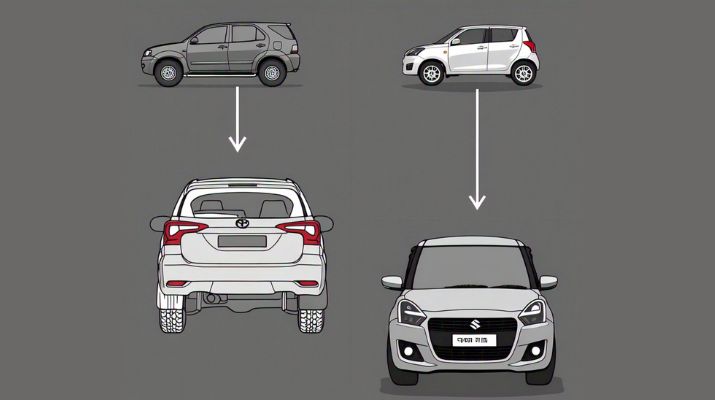When you’re thinking about buying a car or just curious about how they work, you’ve probably heard the terms rear-wheel drive (RWD) and front-wheel drive (FWD). But what do they really mean? In simple terms, it’s all about which wheels move the car forward. Let’s dive into it!
What is Rear-Wheel Drive (RWD)?
In a car with rear-wheel drive, the power from the engine goes to the back wheels. This means that when you press the gas pedal, the back wheels push the car forward. Imagine riding a bicycle where the back wheel is the one doing all the work.
Pros of Rear-Wheel Drive
- Better for Performance: Cars with RWD are often used for sports cars because they handle better when turning at high speeds. This gives the driver more control and a smoother ride.
- Great for Towing: RWD vehicles, like trucks, are better at pulling heavy loads since the weight of the car is more evenly spread out.
Cons of Rear-Wheel Drive
- Slippery Roads Can Be Tricky: In snowy or rainy conditions, RWD cars can be harder to drive because the back wheels can lose traction and spin out.
- More Expensive: RWD cars can cost more to build and repair than FWD cars.
What is Front-Wheel Drive (FWD)?
In front-wheel drive cars, the engine sends power to the front wheels. So, when you push the gas pedal, the front wheels do all the work to move the car forward.
Pros of Front-Wheel Drive
- Better Traction in Bad Weather: Because the engine is over the front wheels, FWD cars perform better in snow or rain. The front wheels have more grip on the road, which helps avoid slipping.
- More Affordable: FWD cars are usually cheaper to build, meaning they cost less to buy and repair.
- Better Fuel Efficiency: These cars are more fuel-efficient since the parts are lighter and simpler.
Cons of Front-Wheel Drive
- Less Fun to Drive: FWD cars don’t always handle as well as RWD cars, especially in sharp turns or when driving fast.
- Limited Towing Capacity: FWD cars aren’t great for towing heavy items like a trailer.
How Do These Drive Systems Work?
Here’s a simple way to think about it:
- Rear-Wheel Drive: Imagine a toy car where the back wheels have a motor that pushes it forward. The front wheels steer it, but the back wheels are doing all the work.
- Front-Wheel Drive: Now, imagine the front wheels are powered by the motor. These wheels steer and also push the car forward, making it simpler to drive in bad weather.
Examples of Rear-Wheel and Front-Wheel Drive Cars in India
In India, we can see both types of cars on the road. Here are some examples:
Rear-Wheel Drive Cars:
- BMW 3 Series: A luxury car known for its smooth drive and sharp handling.
- Ford Endeavour: A large SUV that’s good for off-road driving and towing.
- Toyota Fortuner: Another popular SUV with RWD that’s built for tough terrains.
Front-Wheel Drive Cars:
- Honda City: A popular sedan known for its comfort and fuel efficiency.
- Maruti Suzuki Swift: A small, budget-friendly car that’s perfect for city driving.
- Hyundai Creta: A mid-size SUV that’s easy to drive and perfect for daily commutes.
Key Takeaways
| Feature | Rear-Wheel Drive (RWD) | Front-Wheel Drive (FWD) |
|---|---|---|
| Power Source | Rear wheels | Front wheels |
| Traction in Bad Weather | Not as good in snow/ice | Better traction in snow/ice |
| Handling | Great for sports cars and high-speed turns | Easier to handle in everyday driving |
| Price | Usually more expensive | More affordable |
